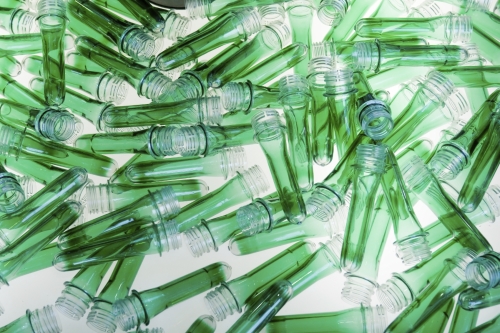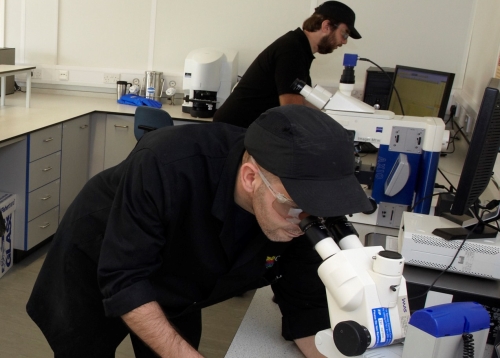In June 2014, PolyOne Corporation released InVisiO Color Inspiration 2015, which contains six color directions, visual effects and textural influences.
The resource was meant to helps designer and brand owners drive innovation in product development using the company’s portfolio of material solutions and color expertise.
Food News International asks Darcy Meyers, global marketing director, packaging, the color trends for food packaging and how colors are instrumental in an initial packaging design process.
FNI: What are the color trends for food packaging this year?
Meyers: A number of the current trends in packaging echo the muted and often sheer tones of land, sea and urban environments.
The use of bold, primary colors continues to translate internationally and across cultures.
In addition, the strong influence of nature-based colors is trending upward, with a continuation of blues replacing greens to communicate sustainable values.
There is also more emphasis on multi-dimensional effects in packaging, where visual content meets surface textures to create differentiated shelf-impact in increasingly competitive food and beverage (F&B) markets.
The use of transparency, for example, can add dimension, allowing for the ability to build color or reveal products in packaging, while frosted or sparkle effects can add depth and drama.
FNI: What are the reasons leading to these trends?
Meyers: Global megatrends and expertise in color research are key influencing factors in these trends.
The world of design and fashion often pave the way for color forecasts, filtering across a variety of industries.
Colors used in the F&B industry, for instance, often reflect those of other industries such as automotive or even cosmetics.
FNI: With growing consumer interests in clean labels and green packaging, how can F&B manufacturers use colors to further their products’ positioning as all-natural, clean, and green?
Meyers: Blues and greens are generally associated with the environment and sustainable living.
Brands will often use these colors in their packaging and products to convey that message to consumers.
In plastic packaging, however, the entire sustainability focus has evolved beyond mere shelf appearance to incorporate lower environmental impact.
In response, colorant material suppliers have developed highly engineered additives and colors to improve processing, reduce energy consumption and improve the recyclability of F&B containers.
FNI: How can colors for food packaging be at the start of a design process?
Meyers: Suppliers who can provide expertise in color development, materials processing and functional performance can bring added value to the design process and collaborate with customers to turn their visions into reality quickly and effectively.
Early decision-making can improve efficiencies in color development time and accelerate speed to market, which is often a crucial factor in fast-moving F&B markets.
By considering colorants and effects early on in the package design process, before critical form and function decisions are made, new creative possibilities can often be discovered.
One of our customers in the Russian beer market using Amber colorants in its polyethylene terephthalate (PET) beer containers was looking to improve its coloring process efficiencies while minimizing the impact on the aesthetics of its packaging and ultimately on its brand integrity.
By working with ColorMatrix early in their development process, we were able to advise on using an advanced SmartHeat-based liquid colorant technology that enabled them to achieve more effective heat uptake and heat distribution through the preform during the blowing process.
It also allowed them greater flexibility in their use of resin.
As SmartHeat colors are compatible with any grade of PET resin, they were able to review their resin usage and make additional efficiency savings.
By having this discussion early in the development process, we were able to open up the opportunity for more effective and efficient coloration.
For another customer with a beverage container application that included a metallic color effect, we were able to work with them at the start of their material selection process to advise on how they could achieve the effect that they needed to meet the requirements of their particular brand identity in a way that would minimize any potential processing issues with their bottle converter.
By utilizing ColorMatrix’s advanced liquid colorant technologies with SmartHeat, we were able to achieve the aesthetic effect they were aiming for, while helping them gain process efficiencies and reduce their carbon footprint which was an important factor for this particular brand.
FNI: What are your views on F&B manufacturers who consider colors as an afterthought and serve an aesthetic function, when compared to the focus of protecting the contents of a product and being lightweight to save on transportation costs?
Meyers: Packaging needs to be looked at holistically.
Product protection, environmental benefits and packaging weight are all important factors that can be affected by aesthetic preferences.
The type of material used and the packaging design will often dictate what color can be achieved.
If this color does not fit with the original design or brand guidelines, you are often back to square one or may be forced to make a compromise.
Suppliers today are able to offer a full service package that encompasses color and design insight with technical and processing know-how.
This means that compromises do not have to be made later in the product development process.












